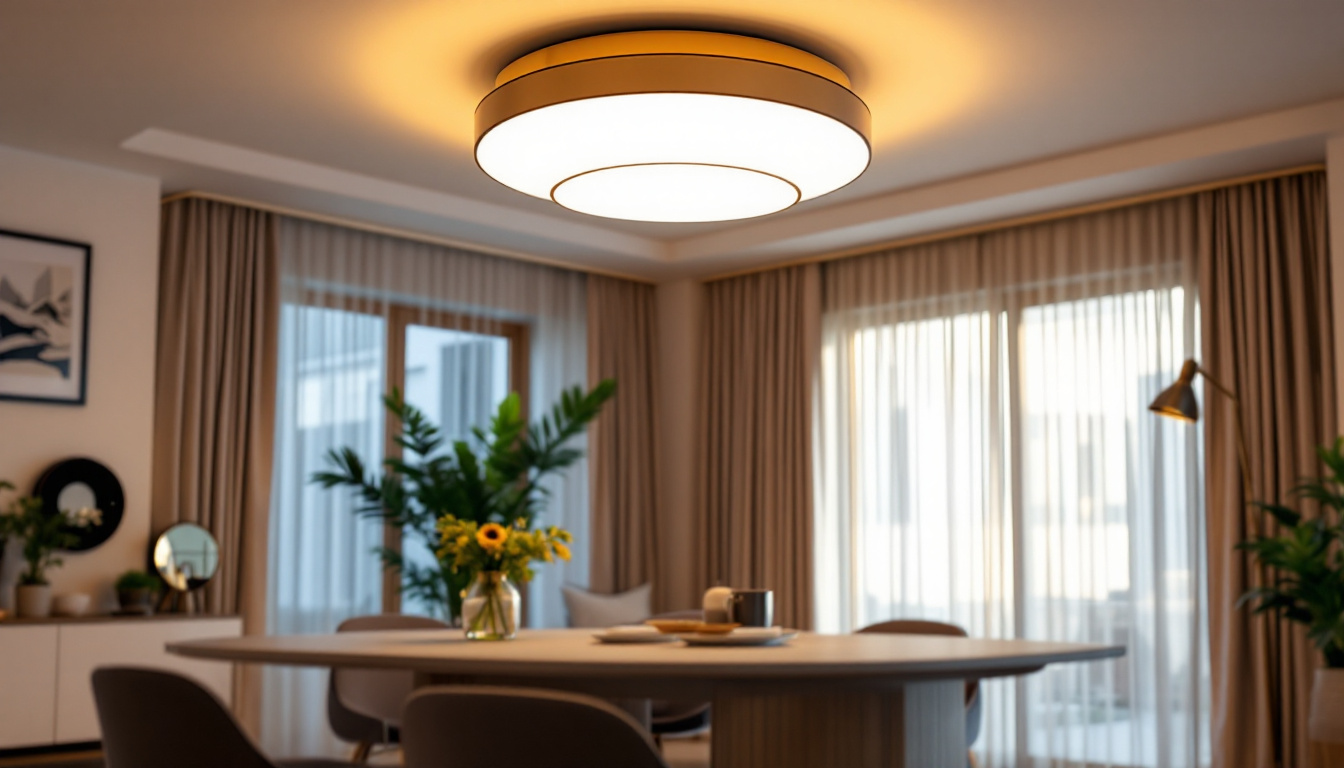
High-Intensity Discharge (HID) lights have become a staple in the lighting industry, particularly for outdoor and industrial applications. Their ability to produce a high lumen output while consuming less energy than traditional incandescent bulbs makes them an attractive option for many lighting contractors. However, understanding the nuances of HID lights is essential for successful installations and client satisfaction. This article will delve into the definition of HID lights and provide a comprehensive guide on the do’s and don’ts for lighting contractors.
HID lights utilize an electric arc to produce light, which is achieved by passing electricity through a gas-filled tube. This technology allows for a more efficient and brighter output compared to conventional lighting options. Common types of HID lights include Metal Halide, High-Pressure Sodium, and Mercury Vapor, each with its unique characteristics and applications.
Each type of HID light serves different purposes and environments, making it crucial for contractors to understand their distinctions. Metal Halide lights are favored for their excellent color rendering and are often used in sports arenas and retail spaces. High-Pressure Sodium lights, on the other hand, are known for their energy efficiency and long lifespan, making them ideal for street lighting and parking lots. Lastly, Mercury Vapor lights, although less common today, are still used in some industrial applications. The choice of HID light can significantly impact not only the aesthetic quality of the illuminated area but also the safety and functionality of the space, especially in settings like warehouses or manufacturing plants where visibility is paramount.
The primary benefits of HID lights include their high luminous efficacy, which translates to more light output per watt of electricity consumed. This efficiency not only reduces energy costs but also minimizes the frequency of bulb replacements, leading to lower maintenance expenses. Additionally, HID lights can illuminate large areas effectively, making them suitable for outdoor and high-ceiling environments. Beyond their economic advantages, HID lights also offer a range of environmental benefits. Their longer lifespan means fewer bulbs are disposed of, reducing waste and the environmental impact associated with manufacturing and recycling light fixtures. Furthermore, as technology advances, newer HID options are being developed with improved energy efficiency and reduced harmful emissions, making them a more sustainable choice for both residential and commercial applications.
When working with HID lights, there are several best practices that lighting contractors should follow to ensure successful installations and optimal performance.
Before selecting an HID light fixture, it is essential to understand the specific application and environment. Different settings, such as warehouses, sports facilities, or street lighting, may require different types of HID lights. Evaluating the lighting needs, including brightness, color temperature, and beam angle, will help in selecting the most suitable option. For instance, a sports facility may benefit from high-intensity discharge lights that provide bright, uniform illumination to enhance visibility for players and spectators alike. In contrast, a warehouse might prioritize energy-efficient fixtures that reduce operational costs while still delivering adequate light levels for safety and productivity.
Energy efficiency is a critical factor in today’s lighting solutions. Contractors should consider the wattage and lumen output of HID lights to ensure that they are providing adequate illumination without unnecessary energy consumption. Utilizing energy-efficient HID options can lead to significant cost savings for clients over time. Additionally, incorporating smart lighting controls, such as timers and motion sensors, can further enhance energy savings by ensuring that lights are only used when needed. This not only reduces electricity bills but also extends the lifespan of the lighting fixtures, making it a win-win for both contractors and clients.
Safety should always be a top priority when installing HID lights. Contractors must adhere to local electrical codes and safety regulations to ensure that installations are compliant. This includes proper grounding, using the right fixtures, and ensuring that the lights are installed at safe heights to prevent accidents. Furthermore, it is advisable to conduct regular maintenance checks on installed fixtures to identify any potential hazards, such as loose wiring or damaged components. By staying proactive about safety, contractors can help mitigate risks and foster a secure environment for both workers and the public.
Moreover, proper training for installation teams is essential. Ensuring that all personnel are well-versed in the latest safety protocols and installation techniques can significantly reduce the likelihood of accidents on the job site. Investing in ongoing education and certifications for team members not only enhances their skills but also instills confidence in clients regarding the professionalism and reliability of the contractor’s services.
While there are many best practices to follow, there are also common pitfalls that contractors should avoid when working with HID lights.
HID lights require regular maintenance to ensure optimal performance. Contractors should not overlook the importance of educating clients about maintenance schedules, including cleaning fixtures and replacing bulbs when necessary. Failing to do so can lead to reduced light output and increased energy consumption. Regular checks can also help identify potential issues before they escalate, saving both time and money in the long run. For instance, a simple cleaning of the fixtures can significantly enhance the light quality and prolong the lifespan of the bulbs, ensuring that clients receive the best value for their investment.
Color temperature plays a significant role in how spaces are perceived. Contractors should avoid using HID lights with inappropriate color temperatures for specific applications. For instance, a warmer color temperature may be more suitable for retail environments, while cooler temperatures may be preferred for industrial settings. Understanding the psychological effects of different color temperatures can also enhance the overall ambiance of a space. For example, warmer hues can create a welcoming atmosphere in restaurants or hotels, while cooler tones can foster a sense of alertness and productivity in office spaces. This knowledge not only aids in client satisfaction but also positions contractors as informed professionals in their field.
While HID lights offer many advantages, contractors should not ignore their environmental impact. Some types of HID lights, such as Mercury Vapor, contain hazardous materials that require special disposal methods. It is essential to educate clients on the proper disposal of these lights to minimize environmental harm. Additionally, contractors should consider recommending energy-efficient alternatives, such as LED lighting, which can significantly reduce both energy consumption and waste. By staying informed about the latest advancements in lighting technology, contractors can provide clients with sustainable options that align with their environmental goals, thereby enhancing their reputation as responsible and forward-thinking professionals in the industry.
Proper installation is crucial for maximizing the performance and longevity of HID lights. Following best practices during the installation process can prevent future issues and ensure client satisfaction.
When installing HID lights, using the correct mounting techniques is vital. Fixtures should be mounted securely at the appropriate height, ensuring that they provide adequate illumination without creating glare or dark spots. Additionally, contractors should consider the angle of the fixtures to optimize light distribution across the intended area.
Wiring is a critical aspect of HID light installations. Contractors should use high-quality wiring that can handle the electrical load of the fixtures. Ensuring that connections are secure and properly insulated will help prevent electrical hazards and ensure the longevity of the installation.
Even seasoned lighting contractors can make mistakes when working with HID lights. Being aware of common pitfalls can help avoid costly errors.
One of the most significant mistakes contractors can make is failing to plan adequately for the installation. This includes not assessing the lighting needs of the space, neglecting to account for existing infrastructure, and not considering future maintenance access. A well-thought-out plan can save time and resources during the installation process.
Each HID fixture comes with specific manufacturer guidelines regarding installation, operation, and maintenance. Ignoring these guidelines can lead to improper installation and potential safety hazards. Contractors should always refer to the manufacturer’s recommendations to ensure compliance and optimal performance.
Selecting the appropriate HID fixtures is crucial for achieving the desired lighting effect. Various factors come into play when making this decision.
The lumen output of HID fixtures varies significantly between different types and models. Contractors should assess the lumen output required for the specific application to ensure adequate illumination. This assessment should consider factors such as the size of the area, the height of the fixtures, and the intended use of the space.
The Color Rendering Index (CRI) measures how accurately a light source displays colors compared to natural light. For applications where color accuracy is essential, such as in retail or art galleries, contractors should select HID lights with a high CRI. This will enhance the visual appeal of the space and improve customer experiences.
As technology continues to evolve, so does the landscape of HID lighting. Staying informed about emerging trends can help contractors remain competitive in the industry.
Smart lighting solutions are becoming increasingly popular, and HID lights are no exception. The integration of smart technology allows for better control over lighting systems, including dimming capabilities and scheduling. Contractors should consider recommending smart HID solutions to clients looking for modern, energy-efficient options.
While HID lights remain popular, the transition to LED technology is gaining momentum. LEDs offer even greater energy efficiency, longer lifespans, and reduced maintenance needs. Contractors should stay informed about the benefits and limitations of LED alternatives to provide clients with the best possible options.
HID lights are a powerful tool in the arsenal of lighting contractors, offering high efficiency and brightness for various applications. By understanding the nuances of HID technology and adhering to best practices, contractors can ensure successful installations that meet client needs. Awareness of common mistakes and future trends will further enhance their expertise in the field. Ultimately, a commitment to quality and safety will lead to satisfied clients and a thriving business.
Ready to elevate your lighting installations with the highest quality HID lights on the market? Look no further than LumenWholesale, where we provide lighting contractors with spec-grade lighting products at unbeatable wholesale prices. Say goodbye to local distributor markups and hello to superior lighting solutions that meet the strictest industry standards. With LumenWholesale, you can enjoy the convenience of bulk buying with free shipping, ensuring you get the best value without any hidden costs. Don’t compromise on quality or affordability. Visit LumenWholesale now to experience the perfect blend of quality, affordability, and convenience for all your lighting needs.

Discover how unique flush mount lighting is revolutionizing the lighting industry, offering contractors innovative solutions for modern design challenges.

Discover essential best practices for using LED panels in your projects with insights tailored for lighting contractors.

Discover how the best light motion sensors are revolutionizing the lighting industry, enhancing efficiency, and transforming the workflow of contractors.

Discover how LED working lights are revolutionizing the lighting industry by enhancing efficiency and productivity for contractors.